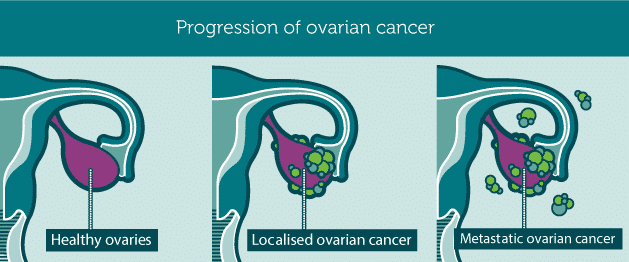Researchers Use AI Diagnosis to Detect Ovarian Cancer Early
Investigators from Dana-Farber Cancer Institute and Brigham and Women’s Hospital (BWH) have now leveraged the power of artificial intelligence to develop a new technique to better detect ovarian cancer.
Ovarian cancer is relatively rare compared to benign gynecological conditions such as ovarian cysts, but early detection tests have a high false-positive rate for ovarian cancer. In addition, clinical trials have found that these tests do not have a meaningful impact on survival rates when they are used to detect early-stage ovarian cancer.
Most women are diagnosed with ovarian cancer when the disease is at an advanced stage, at which point only about one-quarter of patients will survive for at least 5 years.
For women whose cancer is identified at an early stage, however, survival rates are much higher. Currently, there is no FDA-approved screening technique for ovarian cancer, which presents a diagnostic challenge in women with a genetic predisposition for the disease and in the general population.
The team identified a network of circulating microRNAs—small, non-coding pieces of genetic material—that are associated with ovarian cancer risk. MicroRNA can be detected from a blood sample.
“MicroRNAs are the copy editors of the genome,
” according to lead author Kevin Elias, MD, of BWH’s Department of Obstetrics and Gynecology. “Before a gene gets transcribed into a protein, they modify the message, adding proofreading notes to the genome.”The discovery of the importance of microRNA and its presence in the blood is what makes this new technique possible. Normal cells and ovarian cells both have different sets of this found in the blood, making it relatively easy to sort them out for testing.
In the course of their researchers, the team gathered information on microRNAs in blood samples from 135 women before they had surgery or chemotherapy. They used this to train a computer program to differentiate cases of ovarian cancer from benign tumors and healthy tissue.
This program was first tested on data from 859 women with and without ovarian cancer. The sensitivity (not missing any cancers) and specificity (not flagging up healthy people) were better than the current tests for ovarian cancer.
Compared to using a known cancer biomarker called CA-125 to identify the presence of tumors, the neural network and miRNA combination was better able to identify positive, negative, and non-invasive cases of ovarian cancers.
In a group of 120 subjects, the machine learning tool correctly classified 35 out of 43, or 81 percent, of non-invasive tumors. The CA-125 method only identified 47 percent of these cases.
While the study acknowledges that researchers have a lot more to learn about the relationships between miRNA and the development and expression of cancer, it does add to the growing collection of trials proving that machine learning is a promising avenue for improving cancer diagnostics.
‘The key is that this test is very unlikely to misdiagnose ovarian cancer and give a positive signal when there is no malignant tumor. This is the hallmark of an effective diagnostic test,‘ said senior author Dr. Dipanjan Chowdhury, chief of the division of radiation and genomic stability in the department of radiation oncology at Dana-Farber.
“In conclusion, serum miRNA adds to the toolbox of options to diagnose ovarian cancer,” the Dana-Farber team said. “Additional study is necessary to determine whether integrating clinical risk factors could further improve its performance.
“Whether serum miRNA offers a lead time advantage over other putative biomarkers remains to be proven. We need to study the performance characteristics of the miRNA neural network in high risk and low-risk populations. With our improved understanding of miRNA analytic approaches, we can develop better models for this and other diseases.”































